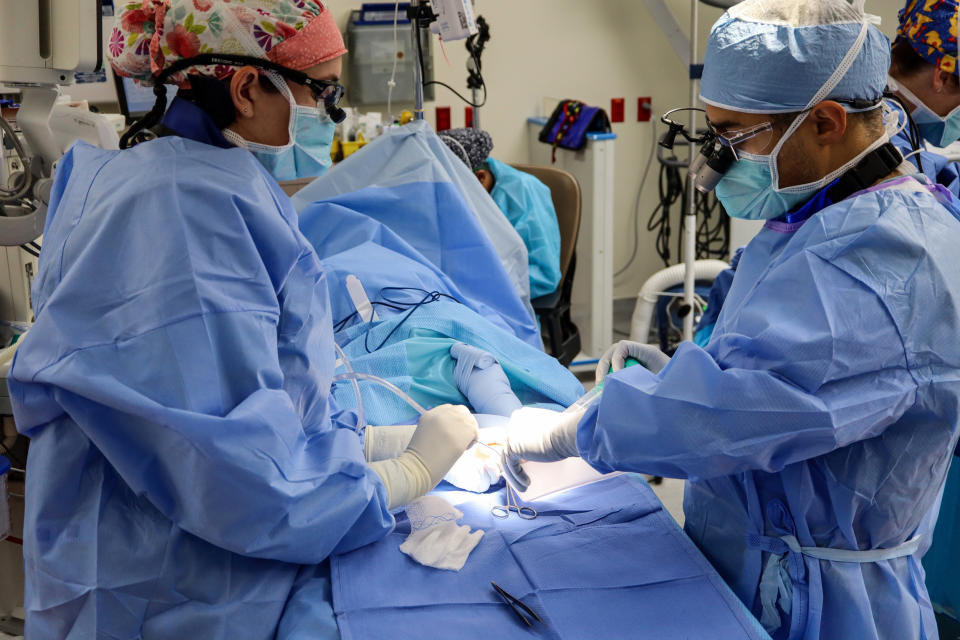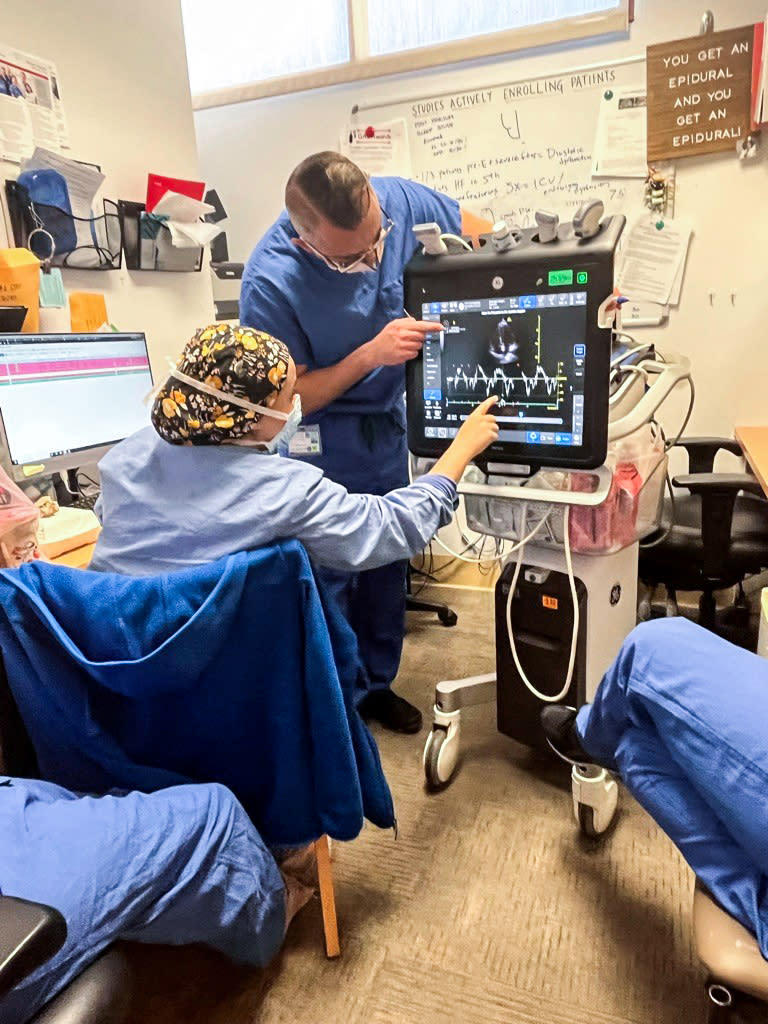There's a big disparity in the number of Latino doctors and surgeons. Advocates are working to change that.
On the very first National Latino/a Physician Day, which takes place Saturday, advocates are working to raise awareness of the relatively small number of Latino physicians and surgeons there are in the United States amid growing health care needs and disparities in the community.
"For the last 40 years, the number of Latino physicians has not changed. That's a failure," Dr. Cesar Padilla, one of the organizers of the campaign and a clinical assistant professor at Stanford's University School of Medicine, told NBC News.
Latinos account for 7% of the overall physician and surgeon workforce and 9% of all health care practitioners and technicians, according to a recent Pew Research Center analysis. Meanwhile, almost 1 in 5 Americans, 62.6 million, are Latino, according to the latest 2020 census numbers, a 23% increase from 2010.
"There was urgency to increase the number of Latino physicians in the United States before Covid. It’s a crisis now,” Padilla added, noting the disproportionate impact the pandemic has had on the Latino community.
Data from the Centers for Disease Control and Prevention shows Latinos are 1.5 times more likely to test positive for Covid-19, twice as likely to be hospitalized and 1.8 times more likely to die from the virus than their white counterparts. In total, so far Latinos made up 17.1% of all Covid-related deaths and 24.6% of all cases.
Latinos are less likely to have health coverage than their non-Latino counterparts at 20% compared to 9%, according to a report by the Department of Health and Human Services. Along with language and cultural barriers, socioeconomic factors have also led to poorer patient outcomes, the report noted.
Physicians who speak the same native language and are able to relate to the cultural experiences of their patients have been linked to higher patient outcomes, a notion that is also supported by The Accreditation Council for Graduate Medical Education. The nonprofit group, which accredits all graduate medical training programs for physicians in the U.S., emphasizes the need to educate physicians who are more likely to work in underserved areas or with minority patients on these nuances.
“I was the only Mexican in my medical school class out of 104 students. That did not sit very well with me because I felt anxiety. I felt sort of out of place,” said Padilla, who is double-fellowship trained from Harvard Medical School in critical care medicine and obstetric anesthesiology, with additional training in critical care echocardiography.
Dr. Michael Galvez, director of pediatric hand and upper extremity surgery at Valley Children’s Hospital in Madera, California, was also concerned by the low number of Latino faculty in the surgical field and partnered with Padilla to help raise awareness on the disparity.

“It can’t be just us,” said Galvez, who completed a Howard Hughes Medical Institute research fellowship and residency in plastic and reconstructive surgery at Stanford. “When you look around and you realize that you’re one of the few Latino or Latina physicians — it’s not enough.”
Padilla added, “If you were to double the Latino matriculants into medical school, it would take 92 years for the Latino medical workforce to meet the needs of the community.”
Although the National Latino/a Physician Day hasn't received any congressional recognition, it has gained widespread support from Latino and non-Latino organizations, nonprofits and societies, including from the American Medical Association, the nation's largest group representing physicians and the National Hispanic Medical Association, among others.
“We want patients to be outraged, too,” Galvez said. “How is it that we’re writing off the pandemic when there are significant factors that have affected families? Simply having a family member die is a big deal and it’s traumatic. It’s something that’s going to take our community longer — to really gain a new equilibrium.”
Both doctors are focusing their attention on California, the state with the largest Latino population, at 40%, by highlighting pipeline and support programs for marginalized aspiring medical students. Latinos account for 11% of the state's medical school graduates.
Out of the nation's 940,254 total active physicians, 50,797 are Latino. California has the largest total number of active physicians with 113,718, 6.3% of which are Latino. In Texas, Latinos account for 11.3% of total active physicians; 15.8% in Florida; 5.2% in New York and 4.5% in Illinois, according to the Association of American Medical Colleges' 2021 State Workforce Data Report.
One of the support programs the doctors highlighted is California Medicine Scholars, a systemwide pilot program that collaborates with local universities and community colleges to increase the number of Latino and minority pre-medical students and diversify the workforce.
It’s received $10 million in funding from the state of California and about $5 million from private donations.
“Now this is just one state. But what we need is we need this program to be multiplied across the country,” Padilla said.

Another program helping the next generation succeed in medical school is Alliance in Mentorship/MiMentor, a national nonprofit connecting underrepresented aspiring physicians with mentors. The program has more than 13,000 members with 10% coming from California with a Latino background, according to Padilla, who serves as its chief medical education adviser.
Many Latinos have untraditional pathways in higher education, or they begin their higher education journeys at community colleges.
The cost of attending medical school is also a challenge for many Latino families.
For those looking to attend, the average total cost of medical school is $218,792, or a yearly cost of $54,698, according to Education Data Initiative data. For Latinos, the average debt is $211,659. Additional costs can also quickly add up, including living expenses, exam and equipment fees, among others.
“It’s going to take so many years to get things better. We’re going to keep working towards this until there is complete awareness from every institution [and] medical school. We’re not going away,” Galvez said.
After recently completing surgery on a young patient, the child’s parents told him he was the first Latino physician they’ve met. Galvez said it was “an honor.”
Follow NBC Latino on Facebook, Twitter and Instagram.
This article was originally published on NBCNews.com

